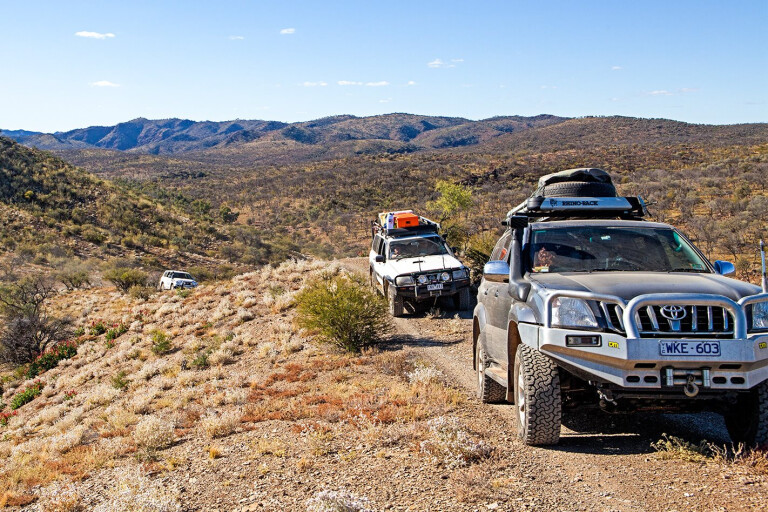
So you want to deck out your 4x4 for outback travel and aren’t sure where to start?
With different products available from a range of suppliers, it’s often difficult to distinguish what you actually need from what’s an unnecessary add-on.
Modifying your vehicle for outback travel shouldn’t be taken lightly, and you need to ensure you install the best 4x4 modifications for outback travel. You’re re-engineering your vehicle for a role that it wasn’t specifically intended for when it rolled off the factory assembly line.
By the time you change the tyres and suspension and add things like a bullbar, long-range tank, roof rack and a spare-wheel carrier, you will have changed your vehicle’s weight, weight distribution, height and aerodynamics.
In turn, these changes will affect steering response, stability, ride comfort, noise levels, fuel economy and fuel range.
Given that changing one thing will often affect other aspects of your vehicle, it’s a good idea to work out exactly what you need beforehand so the modifications can be done as a whole.
And, if possible, have one aftermarket supplier do the complete job. Hopefully this way the modifications and accessories will work in harmony to produce exactly the sort of functionality and performance you require.
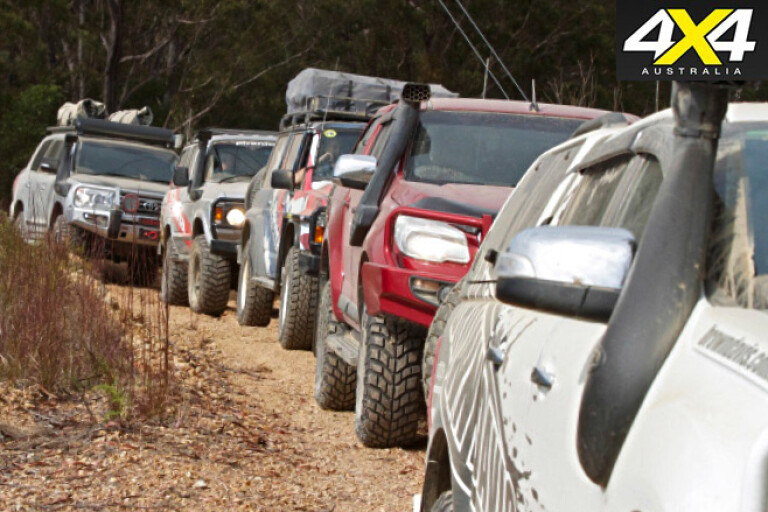
TYRES
If you could change one thing on a standard 4x4 before heading to the outback, it would have to be tyres. Standard tyres on just about all new 4x4s aren’t intended for serious remote-area travel and will most likely be the first thing to fail on an arduous outback trip.
Most people concentrate on tread pattern when selecting new tyres, but there are more important attributes. Ideally you want a tyre that is more robust and less susceptible to damage. You can achieve this by selecting a tyre with ‘Light Truck’ construction, instead of the usual ‘Passenger’ construction.
Light Truck tyres are designed to carry more weight and operate at higher pressures. They have a stronger carcass than passenger tyres and have thicker and straighter sidewalls that are less prone to damage. In comparison, passenger tyres have lighter, more rounded sidewalls that are easily damaged off road. There is a downside to Light Truck tyres; the ride is harsher than passenger tyres, they can be easily upset by road irregularities, they generally don’t steer as well and they can be noisy. Still, these shortcomings are nothing in the big scheme of things if it means less punctures and tyre failures.
 While it might seem odd, tyres with a higher speed rating are built more lightly than tyres with a lower speed rating. This is to avoid heat build up at higher speeds. By fitting a tyre with a lower speed rating (down to 140km/h or ‘N’ rating is legal in most states for 4x4s), you have a stronger, more robust tyre.
While it might seem odd, tyres with a higher speed rating are built more lightly than tyres with a lower speed rating. This is to avoid heat build up at higher speeds. By fitting a tyre with a lower speed rating (down to 140km/h or ‘N’ rating is legal in most states for 4x4s), you have a stronger, more robust tyre.
The amount of sidewall is also important — the more sidewall, the better. With higher sidewalls there’s less chance of the sidewall being ‘pinched’, and it will respond more favourably to ‘airing’ down for sand or mud driving.
Given that increasing the overall diameter of the tyre and wheel combination brings both technical (fouling of other components) and legal problems (a 15mm increase in overall diameter is the current legal limit), to maintain the same overall diameter but still gain sidewall, you need to use a smaller diameter wheel. This is often possible by using an OEM wheel as many manufacturers fit smaller diameter wheels to low-spec models.
While it’s important to maintain close to the overall diameter of the original wheel/tyre package, it doesn’t mean you have to fit the exact original size. A 265/60R17, for example, while a little wider than a 245/65R17, is very close to the same overall diameter. The same goes for any number of different combinations where a slight increase in tyre width is offset by a lower aspect ratio and therefore produces the same overall diameter.
Just be aware that if you deviate from a standard tyre size you may have a problem fitting the spare to its original location.
Most new 4x4s come with ‘Highway Terrain’ (HT) tyres, which should be replaced with ‘All Terrain’ (AT) tyres for outback travel. While you may be tempted to fit a more aggressive ‘Mud Terrain’ (MT) tyre, they don’t always cope all that well with long-distance travel on sealed roads.
BULLBARS
In many ways bullbars are a necessary evil of outback travel. They place a lot of weight (especially with a steel bar) forward of the centre of mass of the vehicle and of the front axle line. They also have a negative affect on your vehicle’s aerodynamics.
But, next to more robust tyres, they are the most important modification you’ll need to make. Not only will they protect the front of your vehicle, especially the cooling system, from animal strikes and the like, but they also serve as a handy place to mount lights, aerials and, of course, a winch.
While aluminium-alloy bars are lighter than steel bars, steel will be more robust and stronger when you need it most.
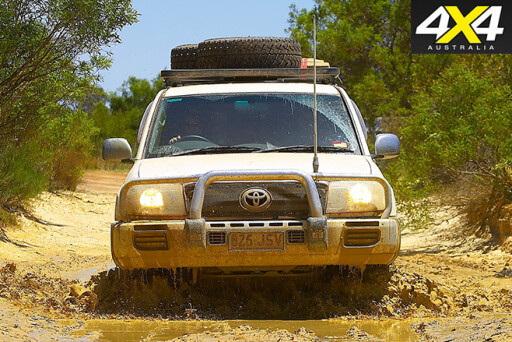 You’ll also have to decide between a standard bar and a winch-compatible bar. While front-mounted electric winches can be very handy, they are not an essential item for outback travel. A simple hand winch will do the same job and is more versatile. However, even if you don’t want to initially fit a winch, by purchasing a winch-compatible bar, the option is left open if you change your mind down the track.
You’ll also have to decide between a standard bar and a winch-compatible bar. While front-mounted electric winches can be very handy, they are not an essential item for outback travel. A simple hand winch will do the same job and is more versatile. However, even if you don’t want to initially fit a winch, by purchasing a winch-compatible bar, the option is left open if you change your mind down the track.
When buying a bullbar don’t be limited by price. A good bullbar is a sophisticated bit of engineering and you’ll have to pay for quality. And of course, you’ll need a bar that is airbag compatible — except in the rare case of older vehicles not fitted with airbags.
LONG-RANGE FUEL TANKS
Obviously, fuel is essential for outback travel. Unfortunately extra fuel can be difficult to carry safely and effectively. The last thing you want to do is carry fuel inside your rig, or on a roof rack, given its weight.
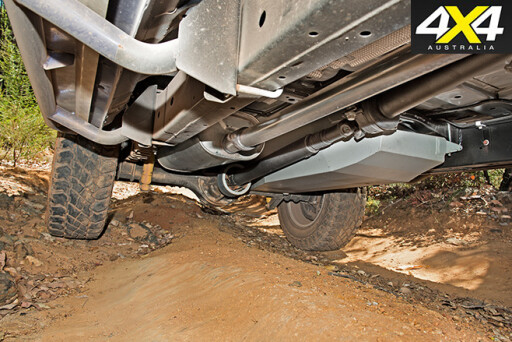 Long-range tanks place the fuel where you want it (under the vehicle) and can normally provide the volume of several jerry cans. Travelling in remote areas, a heavily laden 4x4 working hard on soft sand or mud will use a whole lot more fuel. So, when estimating fuel requirements for a long trip always factor in an extra 20 per cent.
Long-range tanks place the fuel where you want it (under the vehicle) and can normally provide the volume of several jerry cans. Travelling in remote areas, a heavily laden 4x4 working hard on soft sand or mud will use a whole lot more fuel. So, when estimating fuel requirements for a long trip always factor in an extra 20 per cent.
SPARE-WHEEL CARRIERS
It’s a good idea to have a few spare tyres when trekking away from civilisation. And while simple tread penetrations can be relatively easy to repair, sidewall damage is usually terminal. Rear mounted spare-wheel carriers, usually incorporated into a rear bar can carry one or two spares.
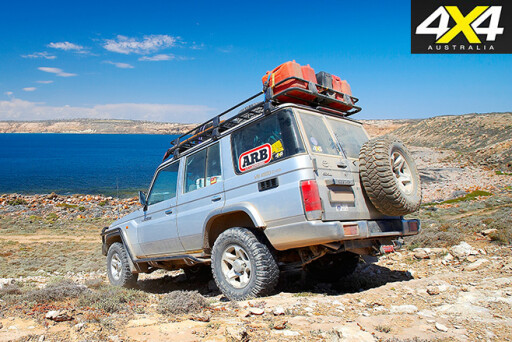 If you are using an oversizedtyre that doesn’t fit to the spare location, or have a fuel tank under the car where the spare normally sits, then a spare wheel carrier is the answer — and certainly a better idea than carrying spares on a roof rack.
If you are using an oversizedtyre that doesn’t fit to the spare location, or have a fuel tank under the car where the spare normally sits, then a spare wheel carrier is the answer — and certainly a better idea than carrying spares on a roof rack.
COMMUNICATIONS
Satellite phones have made outback and remote area communications far simpler. And if you don’t wish to fork out the cash for a sat phone — or take out a long-term plan for a one-off trip — they can be hired out.
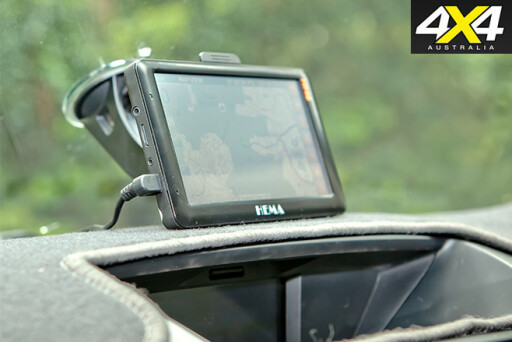 It’s vital to keep a sat phone charged and secured within your vehicle so that it won’t be damaged during an accident. For local communication, a good quality, vehicle-mounted, 5-watt (narrow-band 80-channel) UHF radio is essential.
It’s vital to keep a sat phone charged and secured within your vehicle so that it won’t be damaged during an accident. For local communication, a good quality, vehicle-mounted, 5-watt (narrow-band 80-channel) UHF radio is essential.
CARGO BARRIERS
Cargo barriers may not seem like an essential part of an outback touring kit but they make your 4x4 wagon safer and more functional. In the event of an accident, the last thing you want is recovery gear and tools flying around like missiles inside the cabin.
 A cargo barrier will stop that but it’ll also allow you to load the luggage area of your wagon far higher than you otherwise would.
A cargo barrier will stop that but it’ll also allow you to load the luggage area of your wagon far higher than you otherwise would.
DRIVING LIGHTS
In an ideal world, you should never drive in remote areas after dark but sometimes that’s unavoidable. If caught out after sunset, you’ll need extra lights, with a combination of wide and pencil beams. It’s best to avoid the cheap option and spend some cash on a light that’s vibration resistant, and dust and waterproof.
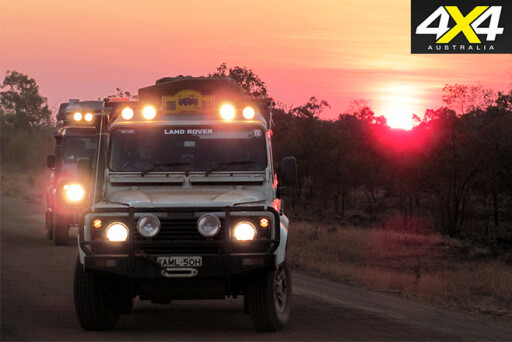 Perhaps more important than the light, is the mounting system. Even the best lights are useless unless they are aimed correctly, so make sure you buy lights with a robust, easily adjustable and vibration-resistant mounting system.
Perhaps more important than the light, is the mounting system. Even the best lights are useless unless they are aimed correctly, so make sure you buy lights with a robust, easily adjustable and vibration-resistant mounting system.
SNORKELS
You may not plan on attempting any deep water crossings, but you never know what affect local rain may have on a particular crossing. Getting water into an internal combustion engine is catastrophic so it’s not worth taking the chance.
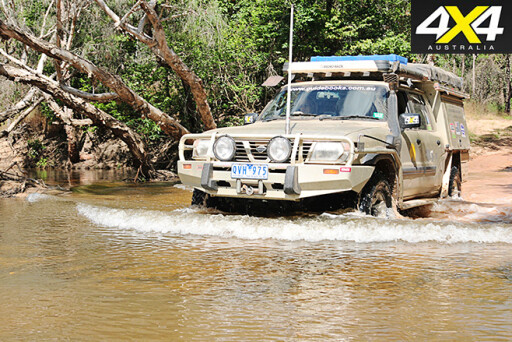 Even if you never use the snorkel for crossing water, they help provide the engine with cleaner, dust-free air. Just be aware that snorkels generally produce wind noise and have some negative aerodynamic effects.
Even if you never use the snorkel for crossing water, they help provide the engine with cleaner, dust-free air. Just be aware that snorkels generally produce wind noise and have some negative aerodynamic effects.
DUAL BATTERY SYSTEMS
If planning to run fridges, camping lights and other accessories then a dual-battery system is essential to protect the starting battery. Dual battery systems can be wired up in several different ways so it best to talk to a specialist regarding the options.
ROOF RACKS AND TRAILERS
Towing a trailer isn’t ideal but having a whole lot of stuff piled up on a roof rack has its problems too. Unfortunately, using either measure is often unavoidable — sometimes you even need both.
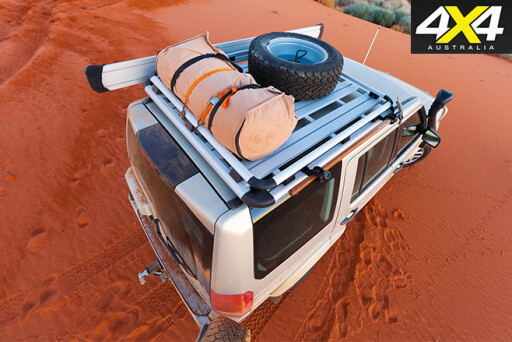 What’s important to remember is that for constant speed touring a trailer will be more fuel-efficient than having gear piled up on a roof rack, due to aerodynamics. Conversely, when you are constantly slowing down and accelerating again, on a typical 4x4 track, the extra weight of the trailer will make it less fuel-efficient.
What’s important to remember is that for constant speed touring a trailer will be more fuel-efficient than having gear piled up on a roof rack, due to aerodynamics. Conversely, when you are constantly slowing down and accelerating again, on a typical 4x4 track, the extra weight of the trailer will make it less fuel-efficient.
SUSPENSION UPGRADES
This may be the last upgrade mentioned here but it’s certainly not the least important. Suspension upgrades should be administered once you’ve finalised the full list of accessories for your vehicle. There’s no point upgrading the suspension and then adding extra weight, you’ll be back where you started.
 Suspension upgrades are done for three reasons. To compensate for the extra weight and altered weight distribution of a modified vehicle; to provide a better ride, better control and more fade-free damping; and to provide extra ground clearance.
Suspension upgrades are done for three reasons. To compensate for the extra weight and altered weight distribution of a modified vehicle; to provide a better ride, better control and more fade-free damping; and to provide extra ground clearance.
You should always buy the very best suspension as poor quality suspension can make long-distance travel a real pain (literally) and unsafe. Ideally, you want the suspension to be as compliant as possible, as supple suspension places less strain on your vehicle and its occupants.
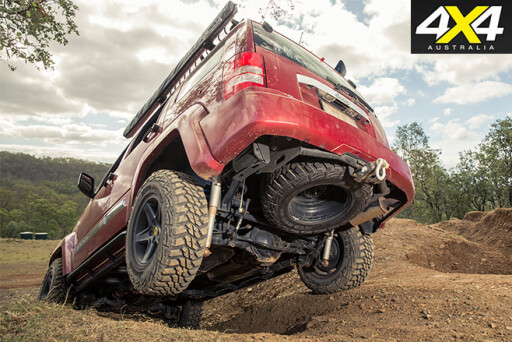 The amount of suspension lift is also a vexed question as the more lift you have the more your on road handling and aerodynamic drag (and hence fuel consumption) will be effected. Ideally you want the least amount of lift you can get away with.
The amount of suspension lift is also a vexed question as the more lift you have the more your on road handling and aerodynamic drag (and hence fuel consumption) will be effected. Ideally you want the least amount of lift you can get away with.
Depending on the vehicle you start with, around 35mm to 50mm will do the trick in most cases.

COMMENTS